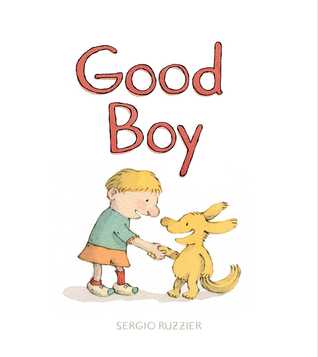I always love cover reveals! Sometimes I know about a book that is going to be published but I'm not sure what the cover will look like just yet. When I know a little about the book my mind starts thinking of possible cover ideas... Luckily I made the right career choice because what the illustrators and the cover designers do - wow! They come up with way better covers than what ends up in my mind.
I am glad you stopped by today because I am so honored to be able to share with you the cover reveal for Josh Funk's upcoming How to Code a Rollercoaster book with illustrator Sara Palacios. How to Code a Sandcastle is a huge hit in my classroom library and I've shared it for #classroombookaday in multiple classrooms and grade levels. I'm excited to see more and more coding opportunities for all students and to see the push for more girls to explore this field.
How to Code a Sandcastle
written by Josh Funk
illustrated by Sara Palacios
published by Viking Books for Young Readers
available now
Now let's get to the good part, I know you didn't come by to see me ramble! Josh Funk stopped by the blog to chat about How to Code a Rollercoaster, give us a sneak peek of the cover and chat about coding!
Mrs. Knott: Hi, Josh!
Josh Funk: Hey, Michele! Thanks for having me
as a guest on Mrs. Knott’s Book Nook! I’ve been a big fan for years now!
MK: I'm grateful our friendship has expanded to burrito lunches now! You've given me a lot of street cred with my students when I get to tell them I've had lunch with the great Josh Funk! But let's get back to your books... Why did you decide to write a series of books about
coding?
JF: Well, first off, I’m a software engineer.
Yes, I write picture books, but I still have the full-time day job of writing
code for a living. And for several years I had been trying to come up with a
way to combine my day job and the world of picture books. While coding can be a
relatively complex topic, some kids are learning coding as early as preschool.
There are loads of great fiction picture books
with STEM-related topics that can certainly be used to get kids interested in the use of technology. And
there are loads of resources out there to teach coding to elementary school
children. It was my goal to combine the two - get kids excited about coding,
but also learn some of the concepts and terminology along the way.
MK: So how did you land on
a series focused on a girl and her robot as the way to do that?
JF: The truth is, the How to Code with Pearl and Pascal
series wasn't my first attempt at writing a book about code. It was actually my
third and a half (I’ll explain the half).
My first attempt was a sort of Alice in
Wonderland / Tron mashup where a brother and sister were sucked into a computer
and they needed to find a way home. They met a pointer named Arnie and a pair
of witches named Iffie and Elsie (I was probably writing this around the time
of the first Frozen movie), and there were loads of inside jokes and by the
time I got to the plot I was already on the 40th page of the picture book, and
it was way too complicated and frankly, none of my critique partners could
understand it.
For that half attempt - I had always been a
fan of the Sir Cumference and the Knights
of the Round Table series, which takes a world that kids are likely
familiar with (King Arthur) and teaches a relatively complex topic (geometry).
So I thought, maybe I’ll take Greek Mythology, which more and more kids are
familiar with nowadays and turn that into a picture book about coding. After
enough research, I realized why there are almost no picture books about Greek
Myths: there is far too much violence and adult romance for the picture book
aged audience (although I love D’Aulaire’s
Book of Greek Myths if you’re looking for something).
The next attempt was a book about an amusement
park - I think I called it Hello World’s
Fair - about a girl and her brother who went through an amusement park and
used the games and rides to talk discuss coding concepts. It was closer, but it
was still too complicated.
And finally Jess Keating suggested to me that
I write a ‘How-to’ book. Keep it simple. Actually build something - after all,
when writing code, you are constructing a program. And that’s when it clicked.
Take a kid-friendly activity (like building a Sandcastle) and look at it
through the lens of a coder. In How to Code a Sandcastle, Pearl and
Pascal using sequences, loops, and if-then-else’s (or conditionals) to build a
sandcastle.
MK: And today we’re here to
reveal the cover of the second book in the series. Can you tell us a little
about How to Code a Rollercoaster?
JF: Here’s what the publisher says:
Pearl and Pascal take their coding adventures to the amusement park in
this follow up picture book from our Girls Who Code program!
Pearl and her trusty rust-proof robot, Pascal, are enjoying a day out
at the amusement park. Spinning teacups, ice cream, and of course:
rollercoasters! Through the use of code, Pearl and Pascal can keep track of
their ride tokens and calculate when the line is short enough to get a spot on
the biggest ride of them all--the Python Coaster. Variables, if-then-else
sequences, and a hunt for a secret hidden code make this a humorous,
code-tastic day at the amusement park!
In short, the focus of this book is the
concept of variables. But we still use sequences, loops, and if-then-else’s
here, too. The idea is to build upon what was learned in the first book, but
still be able to read this book independently.
But for all you writers out there, young and
not-so-young - no writing is ever wasted. I was able to reuse a lot that Hello World’s Fair when writing How
to Code a Rollercoaster. Maybe not a huge amount of the text, but the
fact that I’d already thought about two characters going through an amusement
park gave me a huge head start when putting it together.
JF: It’s been great. They didn’t come into the
project until the very end, though. I wrote all of those early drafts and even
all of How to Code a Sandcastle prior to connecting with them. When I
sent it to my editor at Penguin (she edited one of my earlier books, Dear
Dragon), she mentioned that Penguin was about announce a partnership
with Girls Who Code, and would I have interest in it being a part of their
program. As they didn’t have any picture books planned in the program, I was
thrilled to be invited to partner with such an amazing organization with a
worthwhile mission.
As I look around my day job office, and even
thinking back to my days in college, there has always been a dearth of women in
computer science in my lifetime. That’s why my main character was always a girl
- and she was always named Pearl - both because PERL is a coding language, and
my paternal grandmother’s name was Pearl.
It’s also been great having Girls Who Code
there to fact check everything further to make this book as scientifically
accurate as possible.
MK: And before we get to
the big reveal, what do you think of Sara Palacios’s illustrations?
JF: Brilliant! Sara Palacios’s art is better than
I could have ever hoped. Her portrayal of Pearl and Pascal and everyone else in
the world is fantastic. I so want to go to an amusement park she designs! It’s
even been suggested to me that Ada Puglace needs her own spin-off. (Ada and her
potty habits play a large role in the plot of How to Code a Sandcastle).
MK: And without further ado, here is the cover
for How
to Code a Rollercoaster:
How to Code a Rollercoaster will be available on 9.24.19
and is
available for preorder at:
JF: Thanks so much for having me and revealing
the cover! I hope you have a fantastic rest of the school year and I look
forward to the Mrs. Knott’s Book Nook App coming next fall!
MK: Fall of 2025 maybe. Thanks for stopping
by, Josh!
More about Josh:
Since the fall of 2015,
Josh has visited (or virtually visited) over 300 schools, classrooms, and
libraries. Josh is a board member of The Writers'
Loft in Sherborn, MA
and was the co-coordinator of the 2016 and 2017 New England Regional SCBWI Conferences.
Josh grew up in New
England and studied Computer Science in school. Today, he still lives in New
England and when not writing Java code or Python scripts, he drinks Java coffee
and writes manuscripts.
Josh is terrible at
writing bios, so please help fill in the blanks. Josh enjoys _______ during
________ and has always loved __________. He has played ____________ since age
__ and his biggest fear in life is being eaten by a __________.



























